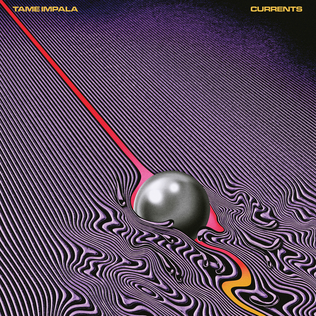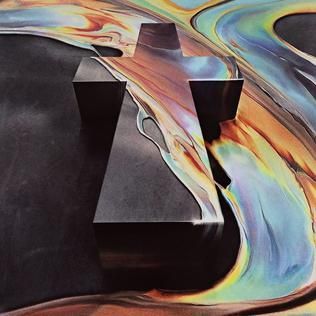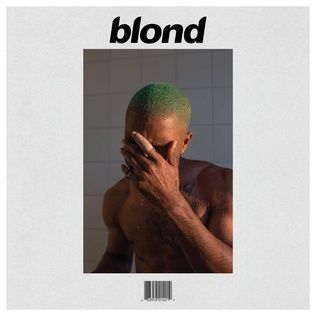How to Design an Album Cover: Tips for Making a Good Album Cover

In today’s crowded music industry, knowing how to design an album cover that stands out is more important than ever. Your album cover is often the first interaction potential listeners have with your music, making it a crucial element in capturing attention and building your brand. The versatility of album art, appearing in formats from billboards to social media and music apps, significantly impacts listener engagement and brand loyalty. This article will guide you through the process of how to make a good album cover, providing insights into what makes a good album cover and how to design album covers that leave a lasting impression.
The Importance of Album Cover Design
When considering how to make an album cover, remember that it serves as the visual representation of your music album. It’s the image that listeners will associate with your sound, often before they hear a single note. On digital platforms, where thousands of albums are released daily, understanding how to design an album cover that grabs attention can significantly impact whether your music gets noticed. Beyond aesthetics, designing an album cover that aligns with your brand is essential for effective music promotion.
Best Practices for Designing an Album Cover
To ensure your album cover meets industry standards and is not rejected by music distributors, follow these best practices:
- Resolution and Dimensions: When designing an album cover, ensure it’s at least 3000 x 3000 pixels to maintain high quality across all platforms. A resolution of 300 dpi is recommended for clarity, especially for physical prints. For CD covers, the recommended size is 4.724 x 4.724 inches, which is crucial for attracting potential buyers and representing the music effectively.
- File Formats: PNG or JPEG is the preferred file format for most music distributors. It ensures compatibility and maintains quality across various digital platforms.
- Color Modes: Use RGB color mode, which is ideal for digital displays. Avoid CMYK, as it’s intended for print and may not display correctly online.
- Text Inclusion: When learning how to design album covers, remember to only include the artist’s name and album title. Avoid adding extra text like “New Release” or “Limited Edition,” which can date the artwork or cause it to be rejected by distributors.
- Avoiding Branding Elements: Do not include URLs, logos, or any promotional text that could violate distributor guidelines. Focus on making a good album cover that highlights the album and artist without external branding.
- Simplicity and Clarity: Your album cover design should be easily recognizable, even when viewed as a small thumbnail. Avoid cluttered backgrounds, and ensure any text is legible against the chosen background.
Key Principles of Album Cover Design
Understanding what makes a good album cover involves mastering the principles of composition, ensuring that your design is both visually appealing and representative of the music. Creative album artwork plays a crucial role in packaging, especially for vinyl releases, and can significantly enhance the appeal of your product. Innovative designs can even gain recognition, such as the Grammy Award for best album packaging:
- Balance and Symmetry: A well-balanced design creates harmony and order. Symmetry can be used to center the focus of the cover, while asymmetry can add dynamic energy.
- Color Theory: Colors evoke emotions and set the tone for your album. For example, warm colors like red and orange convey energy and passion, while cooler tones like blue and green suggest calmness or introspection. Choose colors that reflect the mood and genre of your music when designing an album cover.
- Contrast and Clarity: High contrast between text and background ensures readability, especially in small thumbnail views. This is particularly important on digital platforms where your cover may be viewed on various screen sizes.
- Typography: The font you choose should be legible and align with the album’s mood. While artistic fonts can add character, they shouldn’t compromise readability. The typography should complement the overall design and not overpower it.
- Focal Point: A strong focal point draws the viewer’s eye and makes your cover memorable. Whether it’s an image, a piece of text, or a symbol, the focal point should be the central element of your design.
COLOR AND TYPOGRAPHY
When it comes to designing an album cover, color and typography are two crucial elements that can make or break the overall aesthetic. Colors can evoke emotions, convey moods, and create a visual representation of the music. Typography, on the other hand, can communicate the band’s personality, style, and tone.
- Color Palette: Choose a color palette that reflects the mood and tone of your music. Consider the emotions you want to evoke in your listeners and select colors that align with those emotions. For example, if your music is energetic and upbeat, you may choose bright and bold colors like red, orange, or yellow. If your music is calm and soothing, you may choose softer, more muted colors like blue, green, or purple. The right color palette can transform your album cover into a powerful visual representation of your music.
- Typography: Select a font that reflects the style and tone of your music. Serif fonts are traditional and serious, often used for classical music or heavy metal album covers. Sans serif fonts are modern and streamlined, often used for electronic and indie rock music. Script fonts are cursive and can be used for a broad range of music types, while display fonts are decorative and often used for novelty purposes. The typography should complement the overall design and not overpower it, ensuring that your album title and artist name are clear and legible.
IMAGERY AND STYLE
Imagery and style are essential components of album cover design. The imagery you choose can convey the message and tone of your music, while the style can reflect your band’s personality and aesthetic.
- Imagery: Choose imagery that reflects the theme and tone of your music. Consider using photography, illustrations, or graphics that convey the emotions and moods you want to evoke in your listeners. For example, if your music is dark and moody, you may choose imagery that is eerie and haunting. If your music is upbeat and energetic, you may choose imagery that is bright and colorful. The right imagery can make your album cover a compelling visual representation of your music.
- Style: Consider the style of your album cover design. Do you want it to be minimalist and simple, or bold and elaborate? Do you want to incorporate graphics, illustrations, or photography? Think about the overall aesthetic you want to create and choose imagery and style that reflects that. A well-designed album cover should be a cohesive blend of imagery and style that captures the essence of your music and stands out in a crowded market.
Tools and Resources for Making a Cool Album Cover
If you don’t have advanced design skills or a large budget, there are plenty of tools available to help you learn how to design album cover art that looks professional:
- Free Stock Photo Websites: Websites like Pexels, Unsplash, and Pixabay offer high-quality, royalty-free images that can be customized for your album cover design.
- Online Photo Editors: Tools like Canva, Pixlr, and Adobe Spark provide easy-to-use platforms for designing album covers. These editors offer pre-designed templates and simple drag-and-drop interfaces, making them ideal for beginners learning how to make an album cover.
- Graphic Design Software: For those with more experience, software like Adobe Photoshop and GIMP allows for greater control and customization of your album cover design. These programs offer advanced features like layering, masking, image manipulation, and AI integrations.
Trends in Album Cover Design
Album cover design trends evolve over time, reflecting broader cultural and artistic movements. Here are some current trends to consider when thinking about how to make a cool album cover:
- Minimalism: Minimalistic designs focus on simplicity, using clean lines, few colors, and plenty of white space. This trend is popular in genres like electronic and indie music, where the focus is on conveying a single, powerful idea.
- Retro and Vintage Aesthetics: Nostalgic designs that draw from past decades are popular, especially in genres like synthwave or rock. These covers often use grainy textures, faded colors, and vintage fonts to evoke a sense of time and place.
- Abstract Art: Abstract designs are often used to convey complex or experimental music. These covers may use unusual shapes, patterns, and colors to create a sense of mystery and intrigue.
Examples of Good Album Cover Art
Advanced Techniques for Designing Album Covers
To create an album cover that stands out, consider incorporating these advanced design techniques:
- Layering and Textures: Adding layers and textures can give your album cover design depth and complexity. This technique is especially effective for creating a tactile, three-dimensional look that stands out in digital formats.
- Symmetry vs. Asymmetry: Symmetrical designs create a sense of balance and harmony, while asymmetrical designs can be more dynamic and engaging. Choose the approach that best represents the mood and energy of your music.
- Image Manipulation: Altering images—whether through color adjustments, cropping, or adding filters—can transform a simple photo into something unique and original. Experimenting with image manipulation allows you to create an album cover design that is truly your own.
Tips for Creating Cohesive Branding Through Album Cover Design
Your album cover design should be a reflection of your overall brand identity. Here are some tips for ensuring consistency when designing album covers:
- Consistency Across Releases: Maintain a visual style that ties your releases together, such as using similar fonts, colors, or imagery. This helps build a recognizable brand that fans can easily identify. Hiring an album cover designer can ensure that your visuals are both professional and appealing, enhancing your music's presentation.
- Matching Visuals to Music: The cover art should accurately reflect the tone and genre of your music. For example, bright, vibrant colors might suit an upbeat pop album, while darker, more muted tones could better represent a moody, introspective record.
Leveraging Design Trends to Make a Cool Album Cover
While it’s important to stay true to your style, incorporating current design trends can help your album cover stand out:
- Adapting Trends: Look at what’s popular in the industry and see how you can adapt these trends to fit your music. For example, if minimalism is trending, you might strip back your design to focus on a single, powerful image.
- Avoiding Overused Tropes: Be aware of clichés in album cover design and avoid them. Instead, aim for originality and creativity, using trends as a starting point rather than a template.
Importance of Thumbnail Optimization in Album Cover Design
Most listeners will first encounter your album cover as a thumbnail on a streaming platform, so it’s crucial that your design works at a small scale:
- Designing for Small Screens: Ensure that key elements of your design—such as the focal point and text—are still visible and impactful when reduced to a thumbnail size.
- Focus on Clarity and Simplicity: Simplify your design to ensure it doesn’t lose its impact when scaled down. Avoid clutter and focus on creating a clear, compelling image that draws the eye, even in a crowded interface.
Designing Album Covers for Multiple Formats
Your album cover design needs to look great in both digital and physical formats, which may require some adjustments:
- Digital vs. Physical Formats: Digital platforms often display album covers as square thumbnails, while physical formats like vinyl or CDs may require additional cropping or adjustments. Ensure your design works well across all intended formats. Graphic designers play a crucial role in ensuring that the album cover design is optimized for both digital and physical formats.
- Aspect Ratios and Cropping: Consider how your design will be cropped or resized for different formats, and make adjustments as necessary to maintain its integrity.
Legal Considerations in Album Cover Design
When designing album covers, it’s essential to navigate the legal aspects carefully:
- Copyright and Image Use: Make sure you have the rights to use any images or artwork included in your cover. This includes photos, illustrations, and any other visual elements that may be subject to copyright.
- Permissions and Clearances: If you’re using images of people, famous landmarks, or other recognizable elements, ensure you have the necessary permissions to use them commercially. This can help you avoid legal issues down the line.
Final Steps: Preparing Your Album Cover Design for Release
Before releasing your album cover design, it’s important to finalize the artwork and ensure it meets all technical and legal requirements:
- Review and Adjustments: Conduct a final review of your design to check for any errors or quality issues. Consider getting feedback from others to ensure the design is effective.
- Exporting in the Correct Format: Make sure your file is exported in the correct format and resolution to meet distributor requirements. This final step is crucial to ensuring your album cover looks its best across all platforms.
Conclusion
Learning how to design an album cover is a critical part of releasing music, gaining fans, and building your brand. By following the guidelines and techniques outlined in this article, you can create an album cover design that not only meets industry standards but also captures the attention of listeners and conveys the essence of your music.
What are the most common mistakes to avoid when designing an album cover?
Common mistakes include cluttered designs, unreadable text, and failing to adhere to industry standards, such as incorrect dimensions or file formats.
How important is album cover design in the age of streaming?
Album cover design is crucial in the streaming age, as it’s often the first point of contact a listener has with your music. A compelling cover can significantly impact whether someone decides to listen.
What are some tools for beginners to design album covers?
Canva, Adobe Spark, and Pixlr are great tools for beginners. They offer easy-to-use interfaces and pre-made templates that simplify the design process.
How do I make sure my album cover design stands out on streaming platforms?
Focus on clarity, simplicity, and creating a strong focal point. Your cover should be recognizable and impactful even as a small thumbnail.
Can I use a photo of a famous person on my album cover?
You need to obtain permission to use a photo of a famous person on your album cover, as it may be subject to copyright or other legal restrictions.
How can I create an album cover that reflects my unique music style?
To create an album cover that truly represents your music, start by identifying key themes, emotions, and motifs in your work. Use colors, imagery, and typography that align with these elements. Experiment with different visual styles and seek inspiration from artists within your genre. Collaborating with a graphic designer who understands your vision can also help in translating your music’s essence into compelling visual art.
What should I consider when designing an album cover for digital platforms?
When designing an album cover for digital platforms, it’s essential to focus on clarity and impact. The cover should be easily recognizable and compelling even as a small thumbnail. Avoid overly complex designs that might not translate well at reduced sizes. Ensure that your text is legible and that the colors are vibrant on digital screens. Testing your design on various devices can help you optimize it for different viewing experiences.
Should my album cover design be literal or abstract?
Whether your album cover should be literal or abstract depends on the message you want to convey. A literal design, featuring images or symbols directly related to the album’s content, can clearly communicate your theme to the audience. On the other hand, an abstract design allows for more creative interpretation and can evoke curiosity or deeper emotional responses. Consider your music style and the message you want to send when deciding on your approach.
How important is the use of color in album cover design?
Color plays a crucial role in album cover design as it helps set the tone and mood of the album. Different colors evoke different emotions—warm tones like red and orange can convey energy and passion, while cool tones like blue and green can suggest calmness or introspection. Choosing a color scheme that aligns with the themes of your music can make your cover more visually appealing and emotionally resonant with your audience.
Can I update my album cover after it’s been released?
While it’s technically possible to update your album cover after release, it can be complicated, especially on digital platforms where the original cover is already associated with the album. Changing the cover might confuse listeners or disrupt branding consistency. However, if there’s a compelling reason to update the cover, such as a reissue or special edition, it can be done with the right planning and communication to your audience.
What are the best file formats and resolutions for album cover submission?
The best file format for album cover submission is typically JPEG, as it’s widely accepted and offers a good balance of quality and file size. The minimum resolution should be 3000 x 3000 pixels at 300 dpi to ensure your cover looks sharp and professional across all platforms, whether digital or physical. Some platforms may accept PNG or TIFF formats, but JPEG remains the standard for most music distributors.











